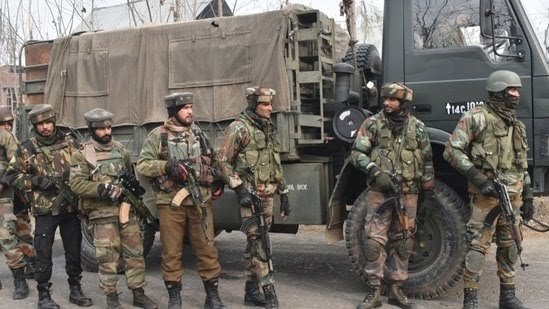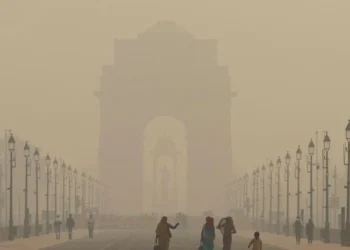Unmasking backers of the Assam Rifles killers in September 19 ambush is essential to restore trust, ensure accountability, and prevent future attacks on central forces in Manipur.
BY Navin Upadhyay
The September 19 ambush on an Assam Rifles convoy in Sabal Leikai, which left Naib Subedar Shyam Gurung and Rifleman Ranjit Singh Kashyap dead, was unprecedented. Not only were central forces targeted for the first time since the Meitei–Kuki–Zo clashes erupted in May 2023, but the People’s Liberation Army (PLA) broke its 48-year tradition by remaining silent—claiming no responsibility. Investigators are left grappling with a stark question: who authorized this attack?
Uncovering the face behind the ambush is all the more crucial because intelligence agencies suspect it was a politically motivated “contract killing” designed to destabilize the state and discredit President’s rule. According to these reports, vested interests are seeking to portray the government as ineffective—despite its success in curbing large-scale ethnic violence—to push for the reinstatement of the suspended state assembly.
Within 72 hours of the assault, security forces launched a major crackdown, arresting 15 PLA members, including key suspects Thoungram Sadananda Singh (alias Purakpa) and Khomdram Ojit Singh (alias Keilal). Six weapons looted from a police armory during earlier ethnic clashes were recovered, along with a van allegedly used in the ambush. The attack, carried out in an area outside the purview of AFSPA while the convoy moved from Patsoi to Nambol base, marked the first assault on central forces since May 2023.
READ: Six Dead in Jaipur ICU Fire, Kin Slam Hospital Negligence
Manipur: Assam Rifles Ambush Contract Killing to Undermine President’s Rule https://t.co/dC7rUqgsdO #ManipurCrisis #AssamRifles #PLA #NambolAttack #PresidentsRule #SecurityAlert
— POWER CORRIDORS (@power_corridors) October 5, 2025
Probe agencies are also looking into the possibility of political patronage for the PLA, particularly after the United National Liberation Front (UNLF) signed a Suspension of Operations (SoO) agreement with the Union Home Ministry. Analysts caution that disaffected members of the PLA, UNLF, Kanglei Yawol Kanna Lup (KYKL), and People’s Revolutionary Party of Kangleipak (PREPAK) could exploit ceasefire vacuums to target civilians.
Singh, one of the arrested suspects, had earlier belonged to the UNLF before shifting to the PLA, an outfit originally called Polei that seeks Manipur’s independence and a separate Meitei homeland. Other groups, including KYKL, PREPAK, and the Kangleipak Communist Party (KCP), continue to wield influence across the valley and along the India–Myanmar border.
READ: Extortion in Manipur Hits Police: Churachandpur SP Issues Alert
Since the evidence points to a troubling possibility that the the ambush may have been executed with backing from elements within civil society or the political class, the urgency of exposing such a nexus is heightened by historical patterns. Allegations have repeatedly surfaced of civil society groups and political figures maintaining links with private militias like Arambai Tenggol or insurgent outfits in the valley. Khuman Koroungabna, the notorious Arambai Tenggol commander, remains at large despite NIA charges for murder, assault, arson, and arms looting.
Similarly, former Chief Minister Biren Singh’s controversial audio tape, in which he allegedly incited violence against the Kuki community, is already under scrutiny. Seen in this context, the contract killing of Assam Rifles personnel could indicate a dangerous political–civilian nexus operating in the shadows.
Arrests and weapon recoveries, though necessary, address only part of the problem. The larger question remains: who orchestrated and funded the ambush? Without unmasking the backers, the root cause persists. Allowing a political or civilian nexus to remain hidden would embolden actors who exploit ceasefire vacuums to target civilians.
The Assam Rifles ambush is not merely another act of insurgency. It is a test of accountability: can Manipur’s authorities ensure that political or societal patrons of violence are exposed and penalized? Failing to do so would create a perception of selective enforcement, undermine law and order, and deepen mistrust among communities.
For peace to endure in Manipur’s volatile hills and valley, the veil shielding contract killers’ backers must be torn away. Only through transparent investigation, equal application of the law, and unflinching scrutiny of political–civilian connections can the state signal that no one is above justice and that calculated attacks on security forces will not be tolerated.













